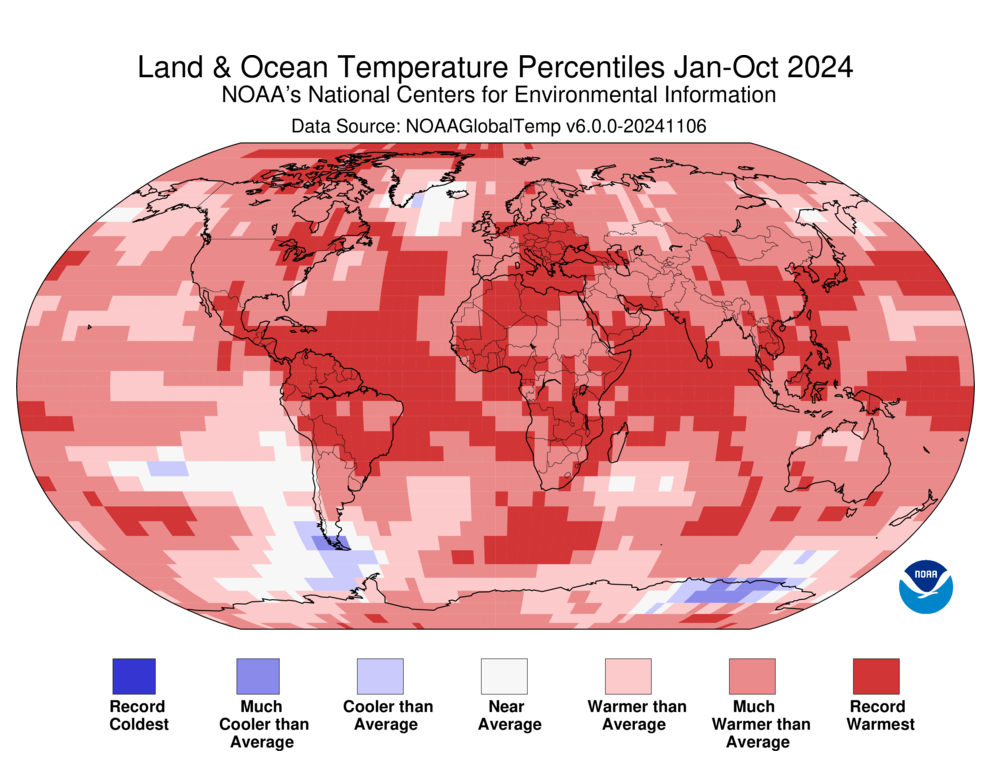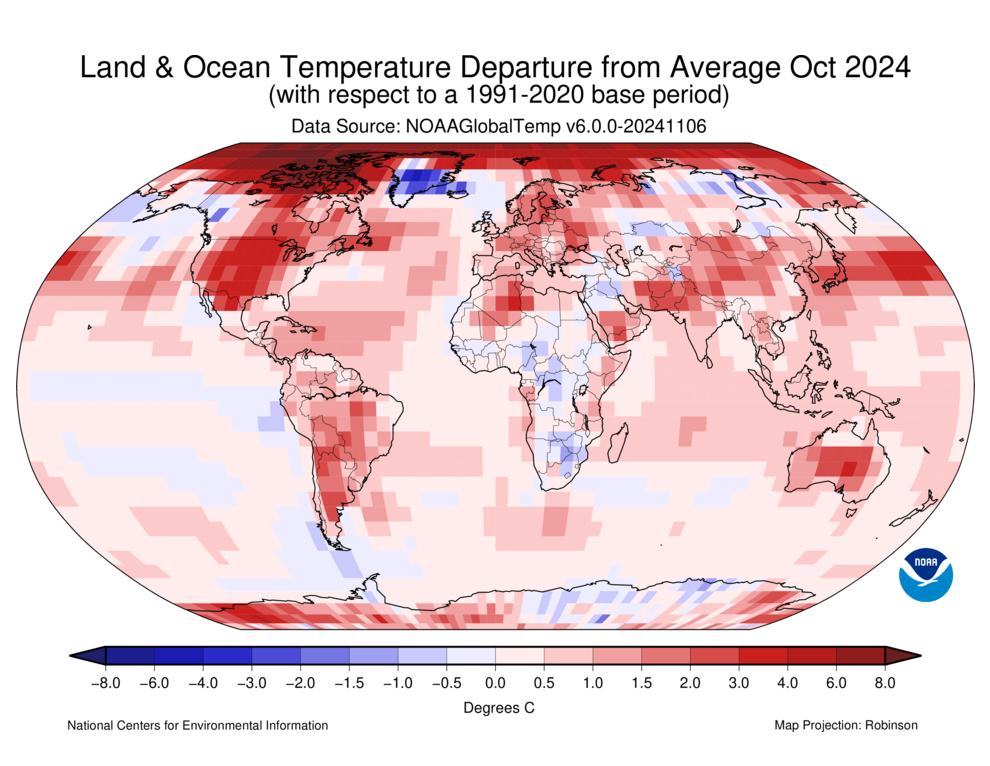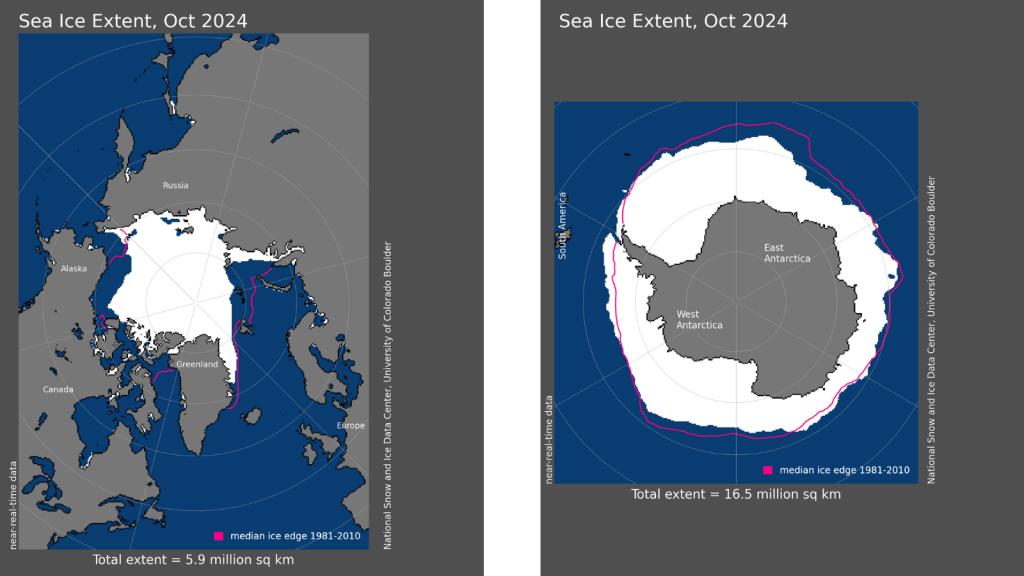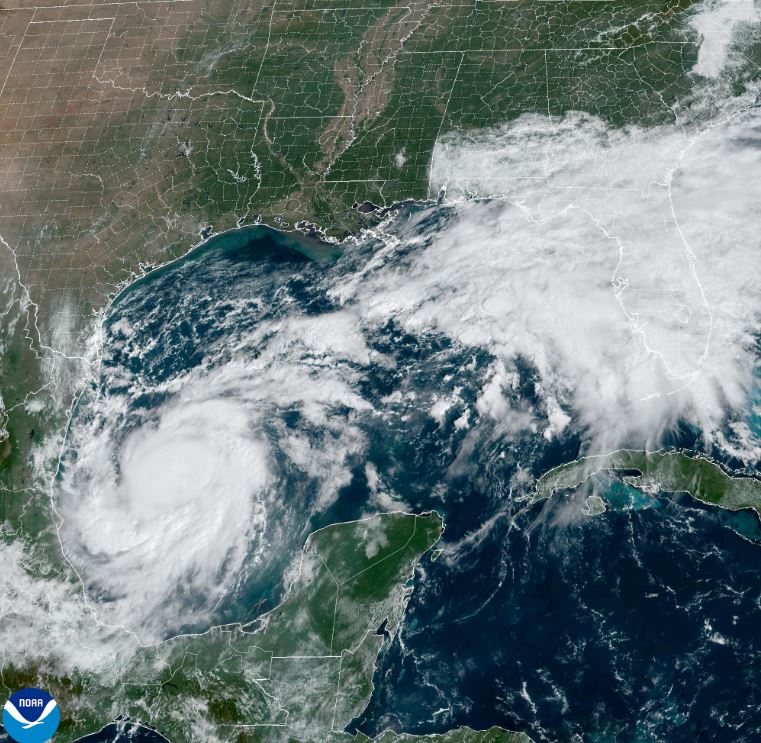The planet continues to experience unprecedented warmth, as October 2024 goes down as the second-warmest October since records began 175 years ago. According to NOAA’s National Centers for Environmental Information, the steady rise in global temperatures has almost certainly set 2024 on a course to be the warmest year on record.

In October, the global temperature averaged 2.38 degrees Fahrenheit (1.32 degrees Celsius) above the 20th-century mean of 57.2 degrees Fahrenheit (14.0 degrees Celsius). This temperature trailed the record-holding October of 2023 by just 0.09 degrees Fahrenheit (0.05 degrees Celsius). North America experienced its warmest October ever, while South America and Oceania each recorded their second-warmest October.

The signs of warming are clear and concerning. Mount Fuji in Japan, a symbol that usually signals the change of seasons, had no snowfall by late October. This is the latest date without snow in 130 years, according to the Japan Meteorological Agency.

From January through October, the year-to-date global surface temperature was a staggering 2.30 degrees Fahrenheit (1.28 degrees Celsius) above the 20th-century average. This is the warmest such period on record. Regions across the world, including Africa, Europe, North America, Oceania, and South America, have all reported their warmest January-to-October spans. The probability of 2024 becoming the hottest year ever is now above 99%, as outlined in NOAA’s Global Annual Temperature Outlook.

Sea ice continues to decline at an alarming rate. October 2024 recorded the smallest global sea ice extent in 46 years, coming in 1.25 million square miles below the 1991–2020 average. In the Arctic, sea ice was 600,000 square miles below average, the fourth lowest on record. Meanwhile, the Antarctic region registered a sea ice extent that was 650,000 square miles below average, marking the second lowest ever recorded.

The month also saw significant tropical activity, with eleven named tropical cyclones worldwide. The Atlantic basin had five storms, including Hurricane Milton, which reached Category 5 strength before making landfall near Tampa Bay. Despite the intensity of storms like Milton, the global total of named storms through October stands at 70, slightly below the long-term average of 76. These trends, highlighted in NOAA’s latest report, underscore the critical state of our climate system. As the planet warms, regions are experiencing shifts in weather patterns, and events like reduced sea ice and intense hurricanes serve as urgent reminders of the global climate crisis.





